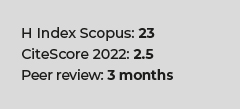Cost utility of renal transplant vs. hemodialysis in the treatment of end stage chronic kidney failure in a peruvian hospital
DOI:
https://doi.org/10.17843/rpmesp.2011.283.520Keywords:
Renal replacement therapy, Hemodialysis, Cost utility, Quality adjusted life year, Quality of life, PeruAbstract
Objectives. To assess and compare the cost utility of the cadaveric donor renal transplant (CDRT) at the Hospital Nacional Guillermo Almenara Irigoyen between 2000 to 2001, against haemodialysis (HD), 5 years after treatment initiation. Materials and Methods. A cost utility study design was used, which evaluated every patient continuing treatment after 5 years of having the CDRT done, and 2 controls consisting in patients having received HD for 5 years, matched by age, sex and disease duration. The costs of each procedure and their Quality-adjusted life years (QALY´s) were evaluated using the questionnaire of quality of life SF-36v2TM, finally calculating the cost utility (CU) and incremental cost utility (ICU) ratios. Results. Fifty-eight CDRT were performed between 2000-1. Five years later, 17 (29%) patients died and only 27 (47%) continued the treatment after CDRT. Out of the 31 patients (53%) having treatment failures, 26% rejected the transplant, 55% presented a complication and 19% were irregular. The mean SF-36v2TM scores obtained by the CDRT and HD patients were 95±12 and 87±18 points, respectively. The QALYs obtained by the CDRT and HD groups were 251 and 229 points, respectively; the CU ratios for the CDRT and HD were USD 11,984 and USD 9,243; and the ICU ratio for the period was USD 40,669. Conclusions. CDRTs performed during the years 2000-1 at the HNGAI, were 5 years later surprisingly less cost effective than the HD and CDRT´s performed at year 2000 had a lower incremental cost utility ratio that those performed the 2001, probably because of the highest rate of irregular treatment.Downloads
Download data is not yet available.
Downloads
Published
2011-09-30
Issue
Section
Research Articles
How to Cite
1.
Loza-Concha RE, Quispe AM. Cost utility of renal transplant vs. hemodialysis in the treatment of end stage chronic kidney failure in a peruvian hospital. Rev Peru Med Exp Salud Publica [Internet]. 2011 Sep. 30 [cited 2024 Apr. 16];28(3). Available from: https://rpmesp.ins.gob.pe/index.php/rpmesp/article/view/520



























